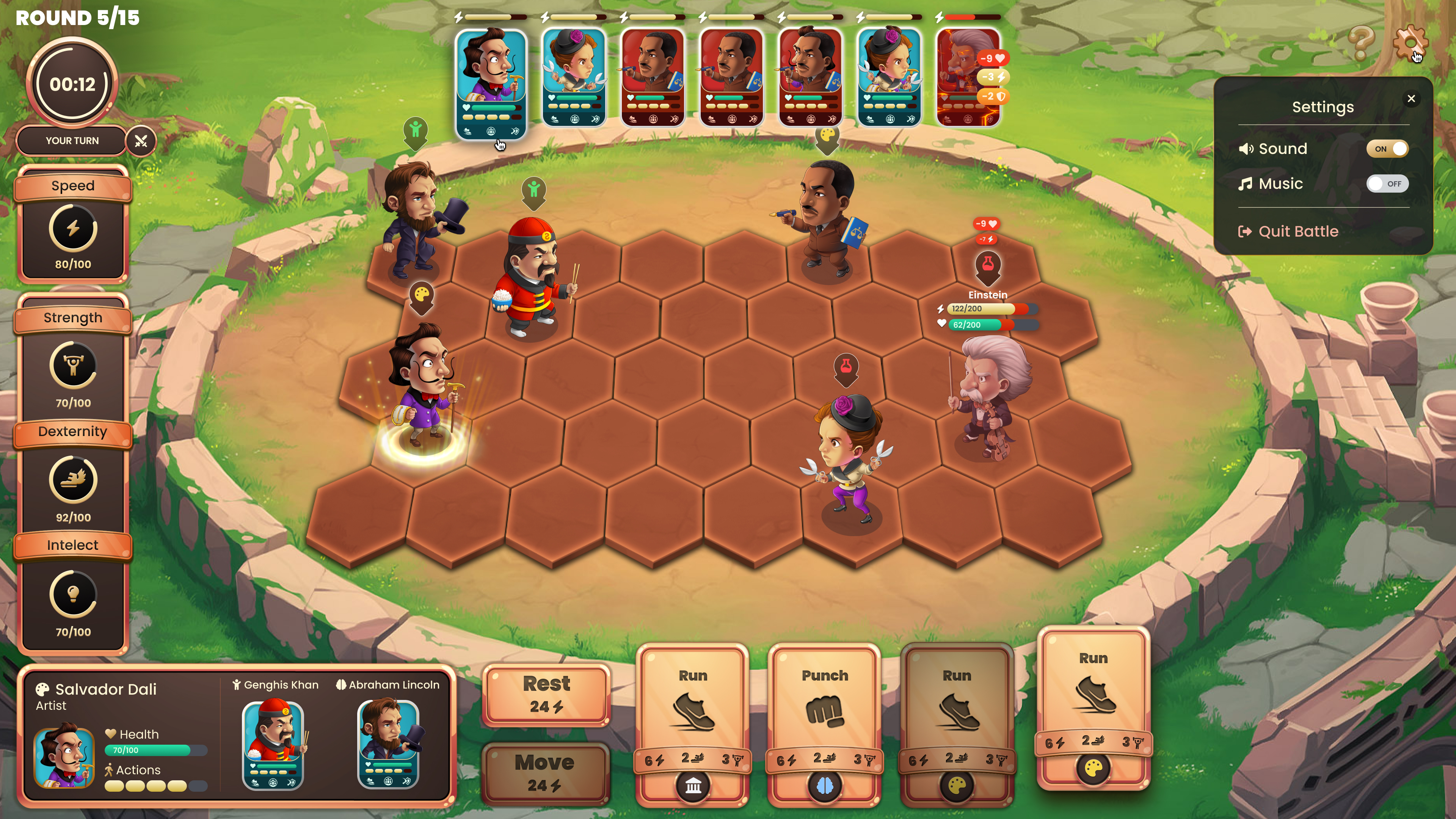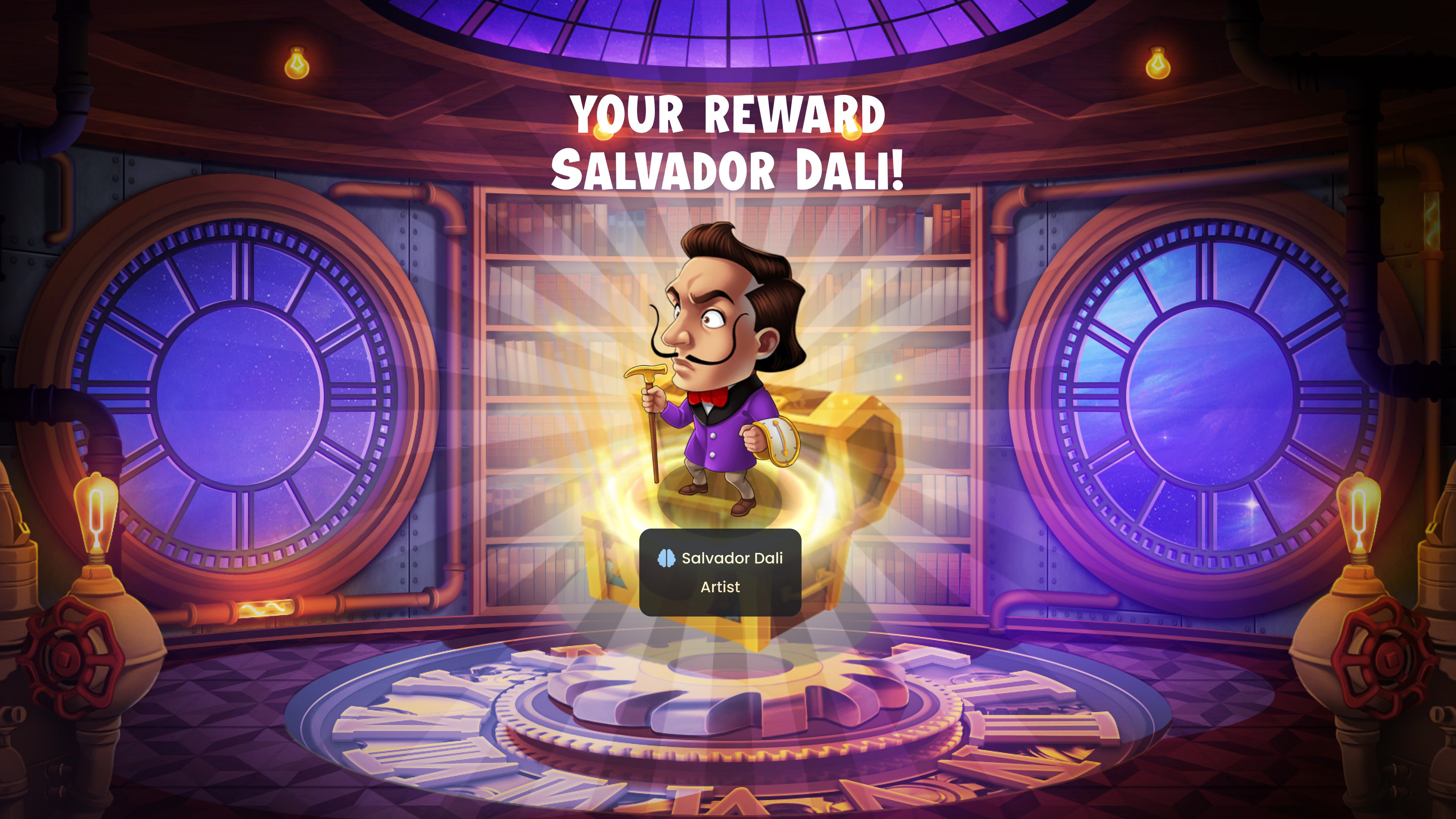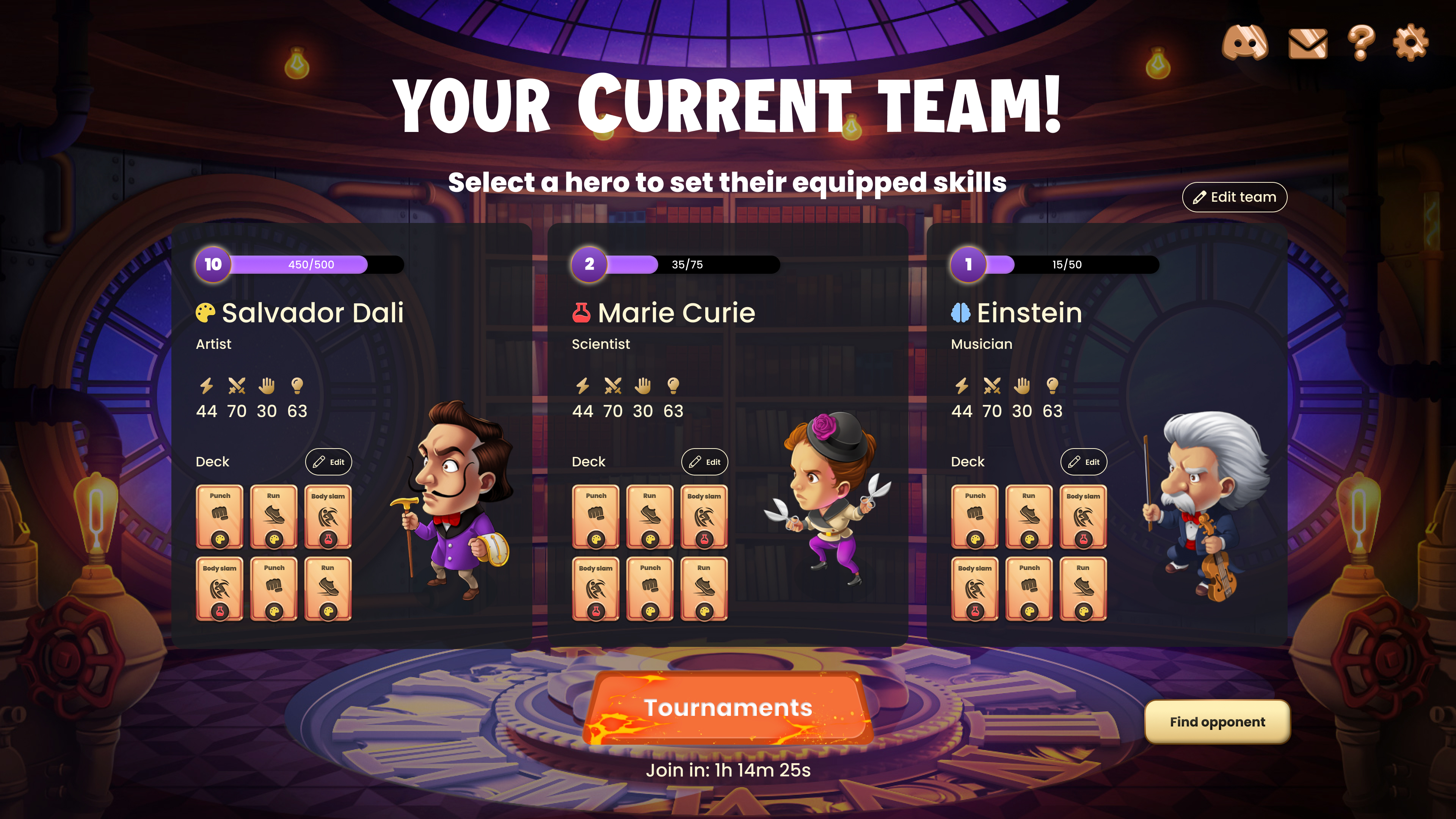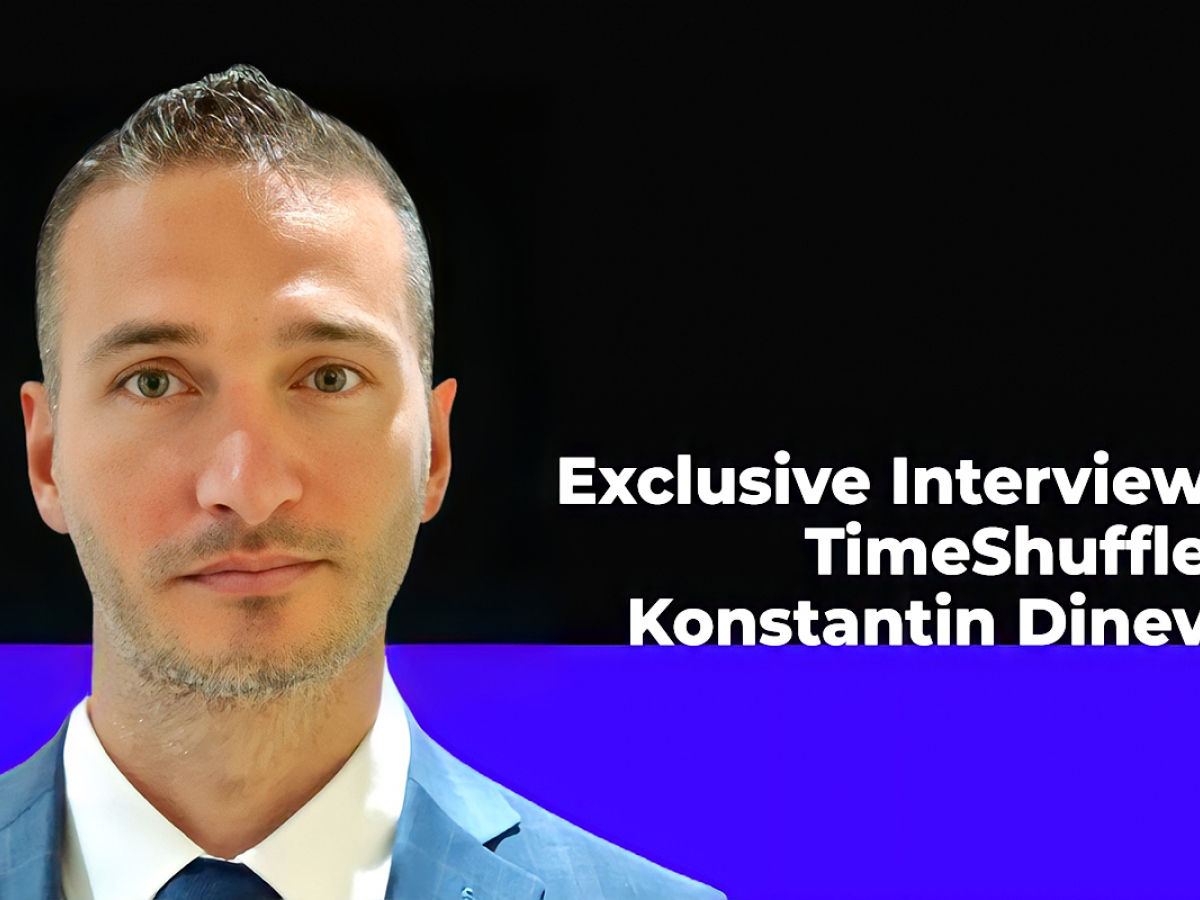Last week, I spoke with Konstantin Dinev, the CEO of TimeShuffle, a crypto and NFT-based RPG online game about time travel and multiverse. He shared the details of the game’s plot, explained why they decided to build on the Avalanche ecosystem and told me about their plans and achievements. You don’t want to miss it!
U.Today: Konstantin, can you tell us about your background before TimeShuffle—how and when you first got interested in the crypto field and blockchain technologies?
Konstantin Dinev: To start with, before crypto and play-to-earn games, I have been in the software development business for over 15 years and creating standard games for the past 10 years now. Everything started with casual games. Our company started developing different RPG games, hyper-casual games, casual games for Facebook and mobile, and so on. Then we moved to online casino games, so we have a lot of experience in slow games, card games, online multiplayer games and in the gambling industry.
But I’ve always wanted to go back to the casual and RPG type of games, because they are much more fun to create. There is much more creativity in them than in casinos online. It doesn’t matter how it has evolved over the years; it’s still pretty basic out there in online gambling.
Of course, I was aware of what’s happening on the crypto markets and that there are games like Axie Infinity and others that are making a splash in the last two years, but it felt a bit far away from what we are doing until last year. Actually, when I met with my friend and now partner Delzar Khalaf from RocketPlays, which is supporting us in this endeavor, we started discussing different ideas about games because he also has a lot of experience creating casual games back in the day. The idea was born from this discussion that we could create a pretty interesting web3 game based on their experience in the crypto world and our experience in the gaming world.

I just remembered that conversation last year, that we have an amazing concept flying around, which is TimeShuffle. It was created by me and my partner CTO, Ico Penchev, maybe six years ago. It was amazing, and we didn’t want to rush it and just build something that we were not ready for because it’s a big project, so it was just sitting there, waiting. We figured out that the mechanics of this game are an amazing fit for a web3 project, actually. That’s when we started looking into it and started working on converting this project into a web3 game.
U.Today: Can you give us more details on TimeShuffle? For instance, what’s the concept behind it?
Konstantin Dinev: There are a lot of concepts behind it, a lot of different mechanics, but overall the main game theme is time travel. There are two different factions battling each other. One is trying to seize control over time and adjust past events so that they can take advantage of them in the future, and the other faction, which we call timekeepers, are trying to correct the timeline as we know it and protect the main historical characters throughout human history, basically. All of that involves the player in a multiverse of alternative versions of all these famous characters throughout history, and all of them – based on their version in the different timelines – have different abilities, different professions and a combination of different skills.
It offers players huge variety, and it makes it much more interesting to acquire new characters in the game. There is a very strong PV version of the game, the singleplayer version basically, where you complete different missions. It has the usual game economy, but there is also a very strong PVP portion of the game where you can battle teams between different players of the game and win lots of prizes. You can win a lot of characters and NFTs in the game. There are some more complex mechanics to the game, like the breeding of the characters, which in our case is actually deep-breeding.
You can combine two of the same characters when you reach a certain level in the game, which destroys them but also gives you a third character, which is stronger than them and a combination of their skills. This also creates rarity for each character because we are going to have a limited number of certain characters.
For example, there will be only, let’s say 1,000 Einsteins in the game, and the more people combine them, deep-breed them with our DNA shuffle machine, the less of these characters there will be in the game, but the more powerful each of them will be, and their value would be higher and higher each time they’re deep-bred. So this is one of the interesting mechanics we have. Another one is we are going to have battle arenas where you can challenge other players, and you’ll be able to bet your own NFTs—different characters against theirs. So whoever wins is going to win the other player’s NFT—which is based on our gambling and casino experience.

We’ve created quite a few pretty successful online games, which are on the free-to-play model. What we’ve learned from them is that you need to have a very strong, competitive model in the game; otherwise it’s not so interesting for players, and this is one of these competitive models that we are going to introduce. Not only that, but you’ll actually be able to join as a spectator to watch this battle—there will be spectators to really watch the different battles between different players when they’re betting their NFTs. It’s not going to be mandatory, of course, it’s just for more hardcore players.
U.Today: It sounds really interesting. Why did you choose the Avalanche ecosystem to build your project on?
Konstantin Dinev: Well, it wasn’t a straightforward decision for us. We had to do research to see how the market is moving in that direction. There were some key elements that made us choose Avalanche. First is the cooperation and the sustainable value-driven way the ecosystem operates. The support we are getting and the feedback we are getting is that the whole ecosystem there is amazing, and it’s really helping us because without this support and cooperation, it’s very difficult to launch a project like this. That was the first reason.
The second, I would say, would be the community. The community of AVA’s network is just super united. Everybody’s very supportive and positive and everybody’s sharing their experience and willing to help us with whatever we need based on their experience. So, the community is really great.
Also, of course, is the matter of the fees, which are pretty affordable compared to Ethereum, for example. That gives us a big advantage. Considering we are going to have a lot of our game on-chain and there will be a lot of transactions, the fees really matter, and they’re pretty good there. This was another key decision for us. The scalability and speed they have in working with transactions is great. It takes mere seconds—sometimes less than a second—to achieve a transaction. That’s pretty good for us.
What else? Probably the opportunity. It’s very interesting. It allows us to actually create our game without congesting the main network. Basically, there are quite a lot of advantages, as you can see.
U.Today: What makes your game different from other games built on Avalanche?
Konstantin Dinev: We are not trying to create a play-to-earn game. It is, of course, going to have this option, but our main goal is to have a play and earn game, meaning that we really want to migrate our web2 experience from gaming to web3. We want to give players the experience of playing a very interesting and emerging game where the whole game experience connects to the web3 model. This is definitely something that sets us apart from what is currently on the market and on Avalanche. This is what we are striving for, to have a game experience that is not what you usually see: a financial tool wrapped up in a game design for a game that is not really interesting to play. It’s more of a way to earn some dollars on the side, and we are not aiming for that.
We actually want to reach a wider audience of actual players who play traditional online games and bring them into the direct world. But this is why we have the free-to-play model, which allows everybody to start playing without spending a dollar on the game. This is something you don’t see so far on web3. A lot of the upcoming projects are already striving for what we are doing, but this was our initial idea already last year. Axie Infinity is trying this now as well. We want to make it more accessible to all of the players who are coming from traditional gaming.
U.Today: You recently closed seed funding with $2.1 million raised from backers. What are your next steps?
Konstantin Dinev: Currently, we are in the development stage of TimeShuffle. We are about to launch our pre-alpha battle mode of the game, which is going to be off-chain. This is going to be launched at the end of June. As next steps, there will be the 5,500 Founders Pass NFT drop at the end of June or beginning of July. Then, we are going to gather feedback from the community on our pre-alpha version so that we can include the updates in the next version, which is going to be the alpha, by the end of 2022. It’s going to be on-chain already with NFT insight enabled.

Then, we are also aiming for our IGO with the alpha release. The plan for the beta version is at the end of 2022 or beginning of 2023, which will already have the full functionality of singleplayer, multi-player and the whole game. This is our roadmap to the end of the year. But now we are really focused on the pre-alpha launch of the battle game mechanics.
U.Today: As far as I understand, you are going to have two tokens: the governance token, TIMS, and the in-game currency, GOLD. Can you tell us about them?
Konstantin Dinev: This is a pretty interesting part. We do have two tokens, TIMS and GOLD. GOLD is the in-game currency which has an unlimited supply and can be used to purchase selected packages and lock game items and, very rarely, NFTs. It’s also going to be used for different upgrades of heroes, and you can spend it in different game modes to summon new heroes and to purchase more energy to play longer in the game. It’s going to be the balancing game currency in our game economy, which we are still working on. TIMS is our governance token, which is on-chain with additional game utility, specifically for exclusive rewards in PV mode and features like deep-breeding of the characters that I explained earlier.
TIMS is considered more exclusive. It is the most powerful asset within the ecosystem next to the Founders Pass NFT. TIMS is aimed to be used for gamified DeFi operations correlating with game play and the progress of the gamers overall. We’ll also be using it for purchasing NFT mystery boxes with a high possibility of actually getting NFT heroes or items and helping the game’s progress. It could also be used for staking. We’re developing functionalities—we call them stake-to-meet—and they’re going to be connected to some of the missions in the game. These missions are time missions and will allow you to stake a portion of your tokens for some time which, in turn, will allow players to earn tokens.
U.Today: For you personally, what has been the most challenging aspect while working on TimeShuffle so far?
Konstantin Dinev: The most challenging part so far has been finding the right combination between bringing traditional gaming into web3 and keeping the values of the actual fundamentals of gaming—and still having the crypto layer on top of it because we want to tell a story with TimeShuffle and really create a game that’s fun to play and makes players come back to play over and over. I would say this is the most challenging part, combining web2 and web3 into one. If we manage to do this successfully, I think that’s going to be an amazing milestone for us, for all our future projects and for other projects. I think this is where the whole market should move to. So, that’s the biggest challenge.
U.Today: What part are you most proud of?
Konstantin Dinev: Maybe the way that we managed to raise funds for the game and how quickly we managed to persuade so many really big backers to back the TimeShuffle game. It really showed us that the concept that we have is good and people believe in it. Of course it’s our creation, but you know, the validation that we got from the community and from the backers—that really made us proud.
The next thing I’m proud of would be the whole team and how everybody handled their responsibilities, like starting from the product side through marketing and community management and everything. I’m pretty impressed how it all worked out. I’m really proud of everybody.
U.Today: Where do you see the future of GameFi going?
Konstantin Dinev: This is something I’ve talked quite a lot about, especially with the market going down in recent months. This has actually validated what we are trying to do here. I think that, from now on, you cannot rely just on the play-to-earn model. It’s not sustainable because as soon as the market shifts a little bit—or a lot, in this case—there is a lot of hesitation in the players, in the investors, in everybody. This shows us clearly that you cannot count just on this part and also gives me confidence that the path we have taken is the right one where you have to engage with the community, with the players, and actually bring traditional gaming into web3 because this opens much wider gates—I would say not just a door, but huge gates for many more opportunities and better and sustainable projects in the future. They’re going to rely on the actual gameplay and how the game interacts with the players—not just the financial part of it. This is how I see the future of GameFi: a combination between both interaction with players and the financial side, with accessibility to traditional gamers all around.

